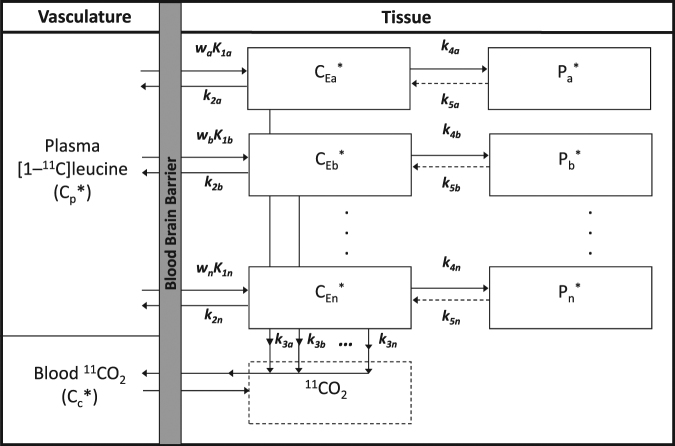Figure 2.
Heterogeneous Tissue Model for L-[1-11C]Leucine PET method. The heterogeneous tissue model20 for the labeled leucine assumed that each tissue is composed of n kinetically homogenous subregions (a,b,…,n), each described by the homogeneous tissue model of Fig. 1. The corresponding fractional weights of the subregions are wa wb, … wn (wa ≥ 0, wb ≥ 0, …, wn ≥ 0; n ≥ 1; wa + wb + … + wn = 1). Total activity in the heterogeneous region as a whole can therefore be described by the weighted sum of the activities in each of the subregions. Expressed in terms of rate constants we have: where and If n, θ0, θi (i = a, b, …, n) and Vb are known, or have been estimated, then the above equations can be used to determine the weighted average influx rate constant for the mixed tissue, K1 = waK1a + wbK1 b+ … +wnK1n, as . Note that we cannot identify the individual subregion’s weighted influx rate constant wiK1i, but only the sum over all subregions. Nor can the fraction of unlabeled leucine derived from arterial plasma in each individual subregion, i.e., λi = (k2i + k3i)/(k2i + k3i + k4i), be identified as this fraction appears in the equation for θi only as the product with the non-identifiable term wiK1i. However, regional variations in measured values of λ are small18 and the parameter can be assumed constant across subregions, (i.e. λ = λa = λb = … = λn), resulting in Weighted average rCPS is then given by

